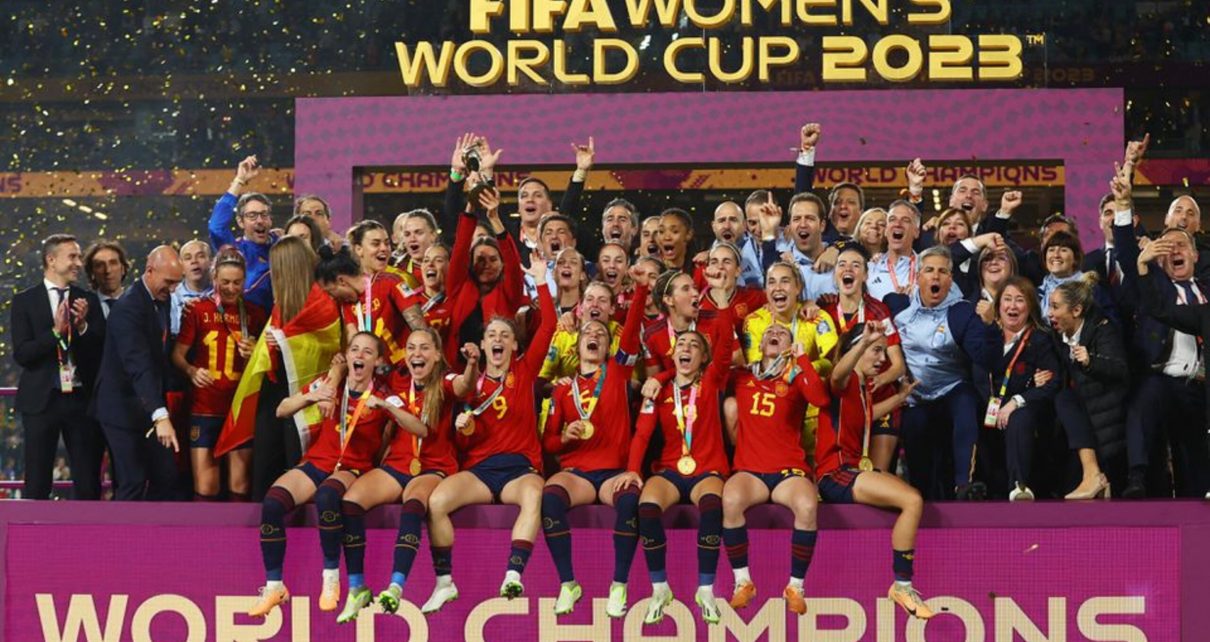In an exhilarating showdown that captivated audiences worldwide, Spain triumphed over England with a 1-0 victory in the Women’s World Cup final on Sunday. This climactic match marked the culmination of a tournament that has etched its name in history, shattering records for attendance and television viewership. As the final whistle echoed across the stadium, it was evident that this remarkable event holds the potential to invigorate and propel interest in women’s football to unprecedented heights.
The ninth edition of this global spectacle, jointly hosted by Australia and New Zealand, stood out as a groundbreaking milestone as it ventured into the southern hemisphere for the very first time. While local fervour experienced a lull with Australia’s exit in the semi-finals, the sheer magnitude of the audience cannot be ignored, with nearly two million fervent fans streaming into the host cities. The crescendo of this numerical symphony was reached with the final’s attendance reaching an impressive 75,784, effectively solidifying this World Cup’s place in history.
Amidst the heart-pounding action, an Olga Carmona goal proved the pivotal moment, differentiating the two sides in a pulsating clash that saw Spain craft the majority of clear-cut opportunities. Carmona, who also garnered the accolade of player of the match, recounted, “We endured hardship; it was a challenging contest, but our belief in victory never wavered.” Her words were broadcast by the Spanish state broadcaster TVE.
This jubilant triumph, however, bore the weight of adversity for the Spanish squad. An internal clash between the team and coach Jorge Vilda, compounded by discord with the Spanish football federation, had deprived the lineup of some of its brightest stars. But resilience thrived as the team bounced back from a staggering 4-0 loss to Japan during the group stage, showcasing their distinctive brand of captivating, offensive football throughout the tournament.
With the victory, the wave of euphoria extended from the field to the spectators. Thousands of devotees converged upon Sydney’s Stadium Australia well before the match commenced, infusing the atmosphere with a festive spirit. Drummers and stilt walkers orchestrated a lively carnival ambience that added to the grandeur of the occasion.
This historic event saw both England and Spain debut in a Women’s World Cup final, further underlining the shift in dynamics within the sport. In the case of England, the wait for a significant trophy has endured since their momentous men’s tournament victory in 1966. While the women’s side had long languished in the shadows of their male counterparts in terms of interest and funding, a transformative phase was ignited following the Lionesses’ conquest of the European Championship last year.
Millie Bright, England’s captain, articulated her pride in the remarkable strides achieved by women’s football, resonating deeply with the seismic changes witnessed throughout the tournament. She acknowledged, “The tournament deserves every accolade; it’s been an extraordinary journey, with unprecedented crowds and a level of support that radiated across all teams. The reality has been surreal, vividly apparent.”
Australia, known for its fervent sports culture, witnessed a feverish fervour for the Women’s World Cup. The country’s semi-final match against England orchestrated a staggering average viewership of 7.13 million on the channels of the Seven Network, etching a new record for the research firm OzTAM. The Matildas’ matches were a sold-out spectacle, with an anticipated average attendance surpassing 30,000.
While this edition marked a triumph in many aspects, the context of New Zealand’s involvement presented a mixed bag. While the Football Ferns enthralled the nation, some matches struggled to draw substantial crowds. Despite these disparities, the campaign led to fervent calls for enhanced support and funding in the women’s football domain.
Australia’s players reaped substantial financial rewards, each pocketing $165,000 in prize money, an astronomical leap from their earnings in 2015. However, a consensus emerged that nurturing the sport at the grassroots level remains a pivotal concern. Sam Kerr, the star striker for the Matildas, emphasised the dire need for increased resources for development and grassroots initiatives.
In response to these appeals, Australian Prime Minister Anthony Albanese pledged A$200 million to bolster women’s sports, envisioning an enriched sporting landscape. The commitment encompasses a comprehensive upliftment of facilities and resources, with soccer earmarked to receive notable support. The government also expressed the intent to make women’s sporting events available on free-to-air television, thus mitigating the accessibility gap.
In the reverberations of Spain’s remarkable triumph, the landscape of women’s football stands poised on the precipice of transformation, a testament to the unifying power of sport and its potential to inspire progress.



